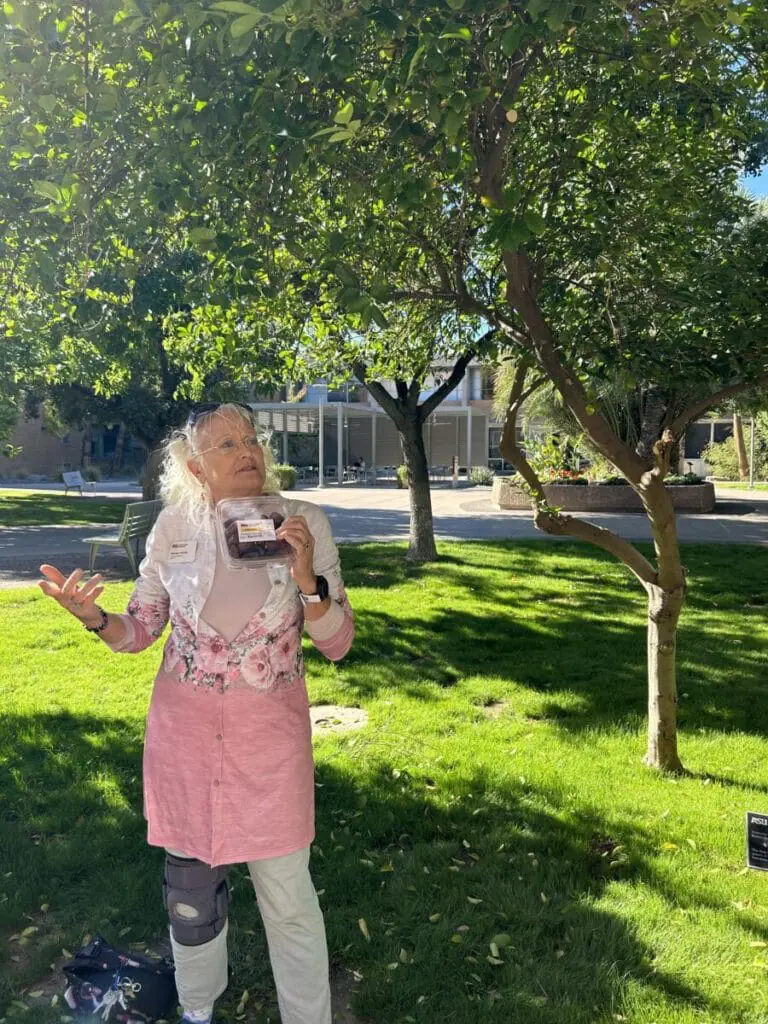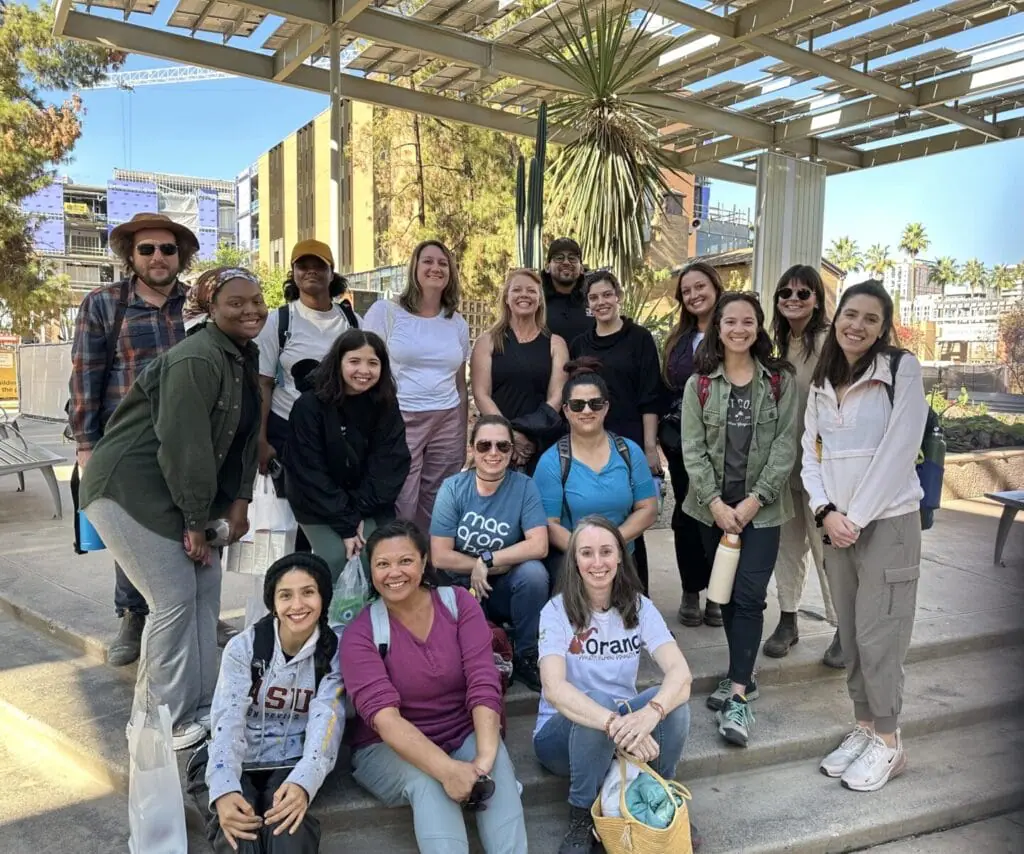
By Tatyana Trujillo, ASU sustainable food systems graduate student
If you know a thing or two about plants and tree species, you could find a lovely meal on the Arizona State University campus. You walk outside, and foods like oranges, olives, mint, rosemary, and many more surround you. Walking the ASU campus, our tour guide, Deborah Thirkhill, took us on a campus food journey that could be the future for more college campuses.
An edible landscape or agroforestry system is designed to mimic the structure and function of the natural ecosystem. Within this ecosystem, there is a combination of trees, shrubs, herbs, and edible plants in a harmonious and self-sustaining environment. With Deborah's help, the university actively engages with the local community, hosting events and outreach programs that work to sustain and keep this initiative alive. For example, Deborah gets a team of students to help harvest the dates from the date palm tree. These initiatives encourage environmental awareness and positively influence individuals to implement similar practices in their communities.
All campuses need a landscape to attract a student body, so why not make it meaningful and valuable for the students? The landscape aims to enhance biodiversity, improve soil health, and contribute to climate resilience by integrating trees and edible shrubs into the campus. Having diverse plant species on campus offers an interdisciplinary approach to learning. It can draw from various fields, including agriculture, forestry, environmental science, and business. Students can engage in an effective learning environment to explore the intersections of sustainable practices and food production.

Deborah showed us many tree and plant species around ASU, but one stands out the most: the date palm tree (Phoenix dactylifera)-the date palm stands in the heart of arid landscapes, where the sun blazes relentlessly. The date palm has deep historical roots, dating ancient civilizations in the Middle East and Middle Africa. Why highlight this tree from the others we saw and explored on tour? This tree is native and produces a hardy and sustent pierce of fruit. More college campuses should highlight and market their native plants around their campus. This can encourage students to start thinking about where their foods come from and influence them to grow their food.
These dates are full of nutritional power. They are rich in natural sugar, fiber, and essential vitamins and minerals. Many people use them for a quick energy boost.
Beyond the delicious fruit, the date palm is used for all its properties. The fronds are used for weaving baskets, mats, and roofing for traditional dwellings. The trunk could be used for furniture because it is a sturdy material. In many cultures, every part of the date palm finds purpose, embodying the principle of sustainable living. At this moment, we should honor and push to think about the native plants in our lives, like the majestic palm tree. We can see the interconnectedness of nature, culture, and human ingenuity.
This blog is part of a series from the Swette Center's annual Arizona Food and Farm Immersion, a required course in their two graduate programs. Students tour the state, meeting with farmers, ranchers, entrepreneurs, government staff, and non-profit leaders.